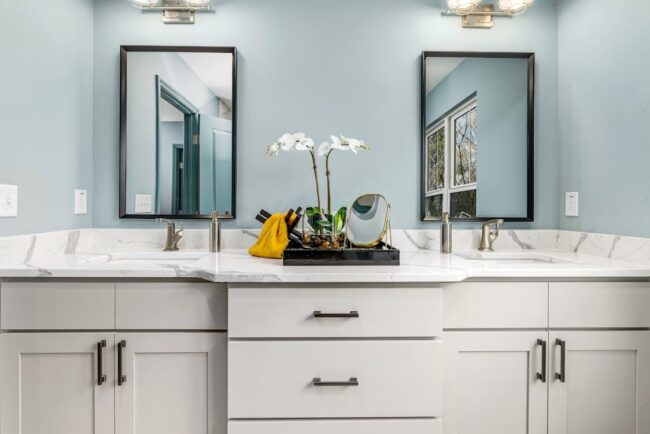
Moving into a newly built home is undoubtedly exciting. Everything is fresh, modern, and seemingly problem-free. However, new homes are not always as perfect as they seem. Construction oversights, rushed installations, and small mistakes can lead to unexpected repairs sooner than most homeowners anticipate. While some issues may be minor inconveniences, others can result in expensive fixes if not caught early.
In Brockport, NY, where winters are harsh and summers bring humidity, certain construction flaws can become bigger problems due to the changing weather. Poor insulation, improper drainage, or HVAC issues can make a new home less efficient and more expensive to maintain. Paying attention to potential oversights on time can save homeowners from stress, unexpected costs, and long-term damage.
Plumbing Installation Mistakes
Plumbing problems are some of the most expensive repairs homeowners face, and new homes are not immune to them. Incorrectly installed pipes, weak fittings, and poor drainage layouts can cause slow leaks that go unnoticed for months. Small drips under sinks or behind walls may not seem urgent at first, but over time, they cause mold, water stains, and even structural damage. Water pressure issues are another common concern when pipes are not properly aligned, causing inconsistent flow or unnecessary strain on the system.
Working with professionals for new construction plumbing in Brockport, NY, helps prevent these costly mistakes. Experts ensure pipes are correctly positioned, drainage systems function properly, and connections are secure. Cutting corners with plumbing during construction can result in major headaches later, including pipe bursts, clogged drains, or even foundation damage from hidden leaks. Investing in expert plumbing services during the building phase saves homeowners from dealing with costly repairs in the future.
Poorly Installed/Insufficient Insulation
A brand-new home should be energy-efficient, but poor insulation can lead to higher energy bills and an uncomfortable indoor climate. Inadequate insulation allows heat to escape during winter and lets warm air seep in during summer, making temperature control difficult. This forces heating and cooling systems to work harder, increasing energy costs and shortening the lifespan of HVAC equipment. Even small gaps in insulation can cause drafts, cold spots, and moisture buildup, leading to potential mold problems.
Homeowners should check that their attic, walls, and crawl spaces are properly insulated from the start. Sealing small gaps with spray foam, upgrading to high-quality insulation materials, and confirming that insulation is evenly distributed can make a big difference.
HVAC Systems Not Properly Sized or Installed
A home’s HVAC system is responsible for keeping temperatures comfortable year-round, but if it’s not the right size or installed correctly, it won’t function efficiently. An oversized unit may cool or heat the house quickly, but it will cycle on and off too frequently, leading to unnecessary wear and tear. A system that is too small will struggle to keep up with demand, running continuously and driving up energy bills. Both scenarios result in higher maintenance costs and a reduced system lifespan.
During the construction process, homeowners should confirm that their HVAC system is properly sized based on square footage, layout, and insulation levels. Regular maintenance, such as changing filters and checking ductwork for leaks, also helps optimize performance. A correctly installed system with good airflow and balanced distribution keeps every room comfortable while reducing unnecessary strain on the unit.
Grading and Drainage Issues
A home’s foundation is one of its most important structural components, but poor grading and drainage can put it at risk. If the ground around the home is not properly sloped, water can pool near the foundation instead of flowing away from it. Over time, this moisture can seep into basements or crawl spaces and will be followed by mold growth, structural weakening, and even cracks in the foundation.
New homeowners should inspect their property’s grading soon after moving in. If water collects near the foundation after rain, adding soil to redirect water or installing a French drain can prevent future damage. Properly positioned downspouts and gutter extensions also help direct water away from the home.
Inferior Roofing Materials or Improper Installation
A new roof doesn’t always mean a problem-free roof. Some builders cut costs by using lower-quality materials or rushing installation, which can be the reason for leaks, missing shingles, or poor ventilation. Small roofing flaws may not show up immediately but can cause issues after the first heavy rain or snowstorm. Water leaks can damage ceilings, insulation, and walls.
Homeowners should inspect their roofs for proper flashing, well-aligned shingles, and good attic ventilation. Hiring a roofing professional to check for weak spots, especially before winter, can help catch issues early. Investing in quality roofing materials and proper installation upfront saves money and prevents future headaches.
Foundation Cracks and Structural Weak Points
Foundation cracks in new homes might seem minor, but they can become serious if left unchecked. Small cracks can widen over time due to settling, moisture, and temperature changes, paving the way for structural issues like uneven floors or sticking doors. Poor construction practices, such as using substandard concrete or failing to reinforce key areas, can also contribute to foundation problems.
New homeowners should inspect their foundations for cracks and other signs of structural shifting. If any cracks appear, immediately sealing them can prevent them from expanding. Consulting a foundation specialist is a good idea for larger cracks or uneven flooring, as catching problems early prevents extensive repairs later.
Electrical Wiring Issues Mean Safety Hazards
Electrical problems in new homes are less common than in older houses, but they still happen. Faulty wiring, loose connections, or overloaded circuits can create serious fire hazards if not repaired. Issues like flickering lights, outlets that spark, or frequent circuit breaker trips could indicate wiring mistakes.
Homeowners should have an electrician inspect the electrical system if anything seems off. Checking for proper grounding, installing surge protectors, and making sure all outlets and switches function correctly helps avoid potential hazards.
New homes may look flawless, but hidden oversights during construction can lead to costly repairs if not tackled early. Plumbing issues, insulation gaps, and poorly installed HVAC systems are just a few of the common problems that can cause long-term damage. For most homeowners, weather extremes can put additional strain on a home’s systems, so being proactive is essential. Regular inspections, hiring experienced professionals, and catching small issues before they escalate can save time, money, and stress.
